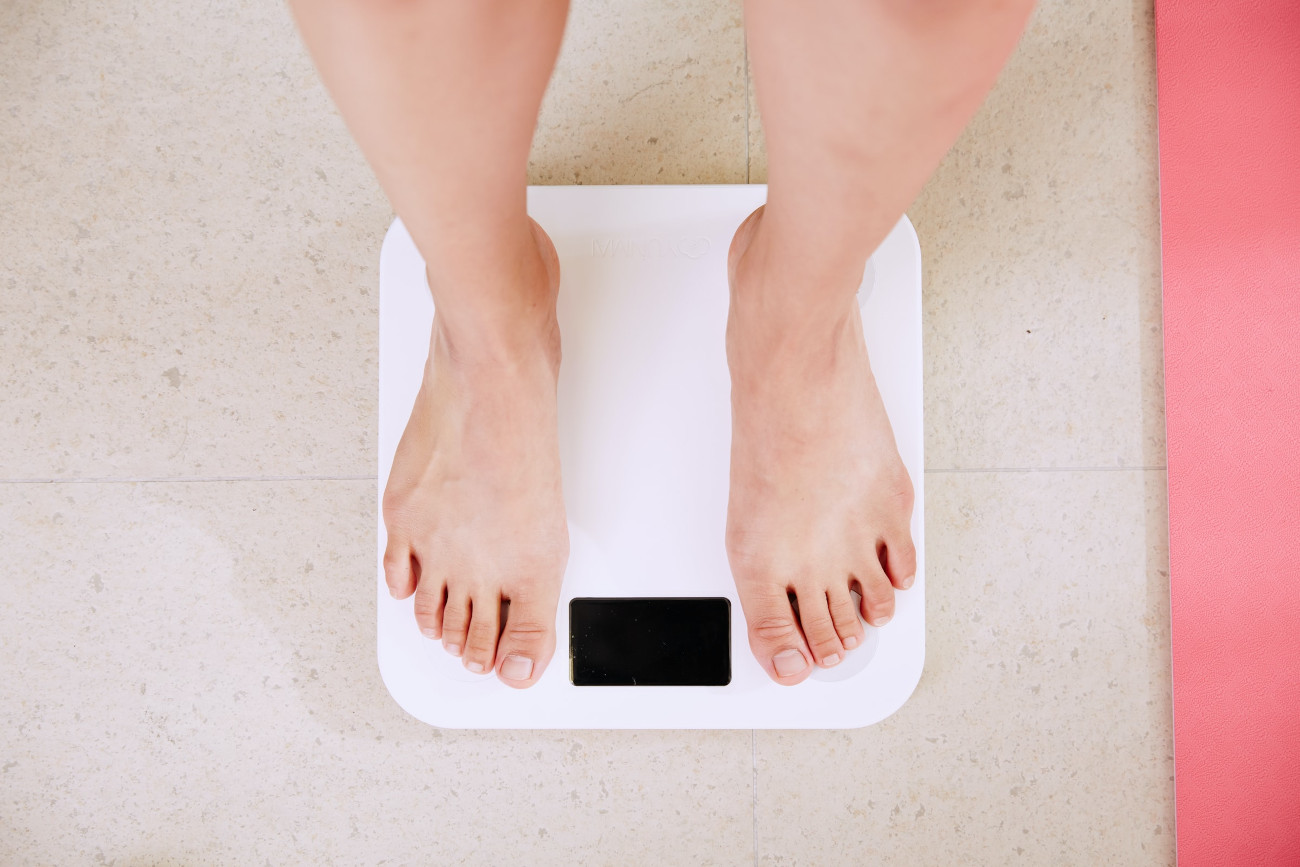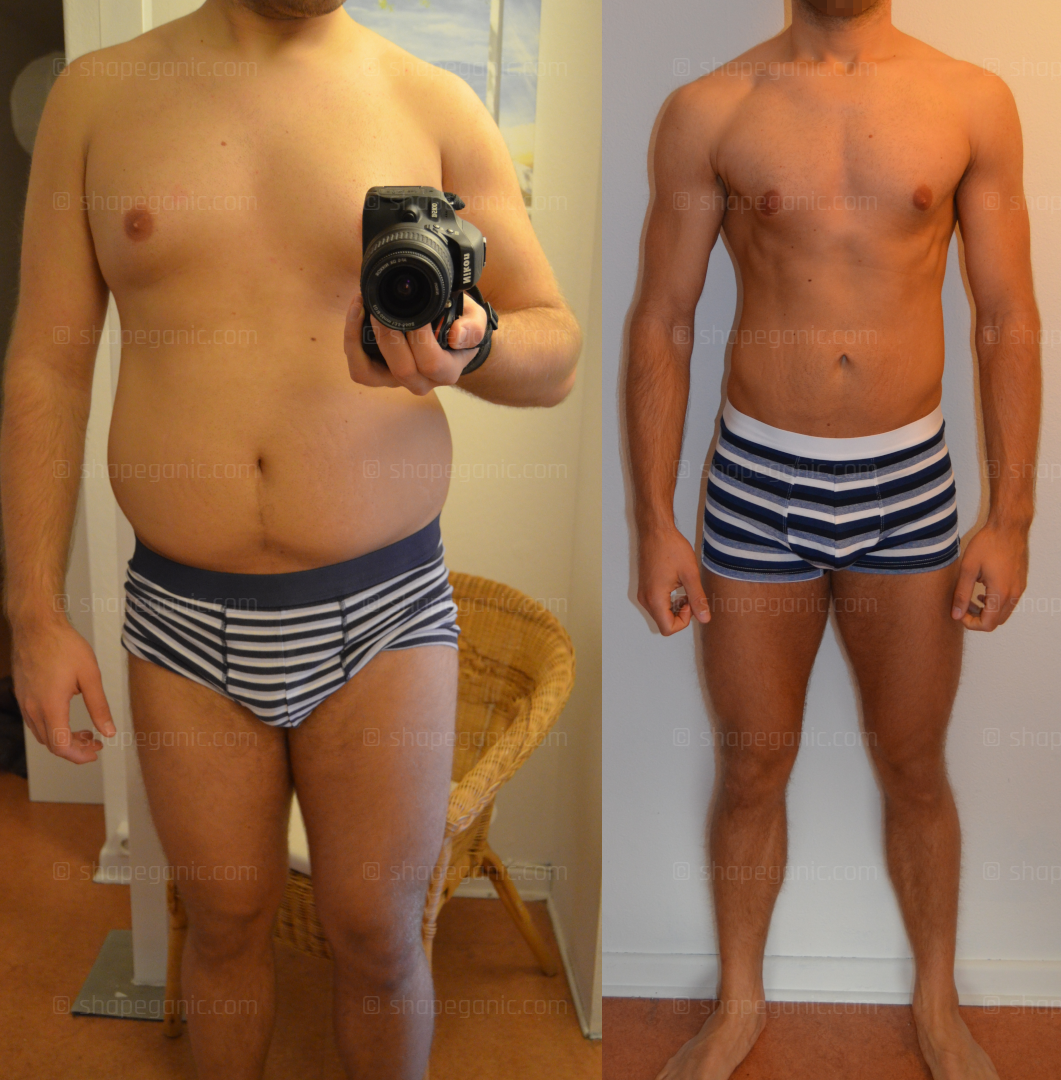Learn clearly with the help of examples how you can calculate your basal metabolic rate, physical activity level and maintenance calories. The calculation is too time-consuming for you? At the end of the article you will learn which app is the most reliable for calculating your calories to maintain weight.
What Is a Calorie in Food?
Before you learn how to calculate your basal metabolic rate, make sure you understand what calories are and what they mean for your body.
You see them on virtually all foods, at least the industrially produced ones. Nutrition facts tell you what macronutrients are present in a food. Specifically, they show you how many calories a serving of the food provides. These calories are also called caloric value and basically tell you how much energy is provided to your body by it. Calories are often listed on nutrition labels as kcal, where the k stands for kilo as in kilograms, but this is neglected in common usage. But what does all this have to do with energy and why does your body need this energy at all?
Whether you’re thinking, walking, standing, sleeping, breathing, running, sitting or just getting excited. Yes, even for digestion your body needs one thing: energy. This energy must be supplied from the outside and that is through food. In food, the caloric value, or energy value, is expressed in kilojoules (kJ) or in the more common term calories (kcal). Your body gets energy from food indirectly through the macronutrients fat, carbohydrates and protein. 1 g of fat provides 9.3 calories while both carbohydrates and protein provide 4.1 calories per gram.
What Does Your Basal Metabolic Rate Mean?
Imagine lying on the couch all day watching Netflix. You don’t even move your fingers to change the season of your favorite show. Now you think to yourself that you wouldn’t consume any calories, after all you haven’t done anything. Far from it! Even if you do absolutely nothing, your body still needs energy to live. Whether it’s metabolic processes like digestion or regeneration, thought processes or regulating and maintaining your body temperature. All of this consumes energy and the totality of this energy has a name. It is the basal metabolic rate. Below you will learn how to calculate your basal metabolic rate.
How Do I Calculate My Basal Metabolic Rate?
All roads lead to Rome. The same applies to the calculation of the basal metabolic rate. There are several formulas for this, some of which provide widely differing results. Very rudimentary formulas only take into account the body weight and leave age, height and gender out of consideration. Formulas that provide reliable results are, for example, the somewhat outdated Harris-Benedict equation. An updated version of this equation based on it is the Mifflin-St.Jeor equation. Since it should be your top priority to always use the latest scientific findings, you will get to know the Mifflin-St.Jeor formula in the following.
10 × [Weight in kilograms] + 6.25 × [Height in cm] – 5 × [Age in years] + S
The constant S is -161 for women and 5 for men. And don’t worry if something is unclear to you. In a moment you will see how easy it is to use the formula with an example.
If you are from a region of the world that does not use the metric system, you will need to convert your height in feet to centimeters as follows:
Height in cm = Height in feet × 30.48
You must also first convert your body weight in pounds to kilograms in order to use the above formula. You do this as follows:
Weight in kilograms = Weight in pounds × 0.453592
Sample Calculation - Basal Metabolic Rate
You learn best by examples? You are not alone, so now you will be presented with an example calculation. You’ll see how easy it is to apply the Mifflin-St. Jeor equation.
Consider the following example: a 20-year-old woman with a height of 5.6 feet and a weight of 154 pounds. Putting this into the formula above gives:
Height in cm = 5.6 × 30.48 = 170 centimeters
Weight in kilograms = 154 × 0.453592 = 70 kilograms
10 × 70 + 6.25 × 170 – 5 × 20 - 161 = 1501.5 calories
Also, remember that you use -161 for S on a woman.
We therefore obtain a value of 1501.5 calories for the basal metabolic rate. This is the amount of energy you need to supply your body in order to maintain the most necessary bodily functions. Physical activities are therefore not taken into account here. We will deal with this in the next section.
What Is Meant by Physical Activity Level?
The average calories burned a day can be divided into two components: basal metabolic rate and physical activity level. You have already learned about and calculated the basal metabolic rate. But what is the physical activity level?
Remember that basal metabolic rate is the amount of calories you use when you do absolutely nothing. Physical activity level is the amount of energy you use during the day to perform any physical activity. This includes standing, walking, running, carrying groceries, riding a bike, lifting weights, and so on. So, in summary, an active lifestyle, whether through work or sports, increases the amount of calories you consume in addition to your basal metabolic rate.
Here, too, there are different approaches to calculating the calories burned by the physical activity level. On the one hand, there are mathematically quite complex procedures and those that are somewhat simpler. Experience shows that the complicated models do not lead to a better result. The reason for this is that the respective activity levels must be estimated by you in each case. Also, not every day is like the previous one. So in each case you get an estimated value, unlike the rather exact calculation of the basal metabolic rate. For this reason, we will do without the time weighting of the activity level and in the next section we will get to know a method with which one comes to equivalent results.
How Do You Calculate Your Physical Activity Level?
To determine the calories burned by the physical activity level, you need to estimate your daily activity level. Below you will find an official and scientifically determined table in which you can read your PAL value. PAL stands for Physical Activity Level and expresses as a number how high your daily physical activity level is. So in the Activity Level column you choose the description of the daily activity that best describes your situation. Here you will also see an example of how you can proceed.
| Activity Level | PAL Value | Examples |
|---|---|---|
| exclusively sedentary or lying lifestyle | 1.2 | old, frail people |
| exclusively sedentary with little or no strenuous leisure activity | 1.4-1.5 | office workers, precision mechanics |
| sedentary work, at times also additional energy expenditure for walking or standing activities | 1.6-1.7 | laboratory technicians, drivers, students, assembly line workers |
| predominantly walking and standing work | 1.8-1.9 | housewives, salesmen, waiters, mechanics, craftsmen |
| physically demanding professional work | 2.0-2.4 | construction workers, farmers, forest workers, miners, competitive athletes |
However, before you are presented with an example, you should know what the PAL value means mathematically. A PAL value of e.g. 1.4 expresses that you have consumed 40% more calories in addition to the basal metabolic rate. If you multiply the basal metabolic rate by the PAL value, you would calculate your maintenance calories. However, to calculate only the calories burned by physical activity, you must subtract 1 from the PAL value and then multiply this value by the basal metabolic rate calculated above. You can see this in the following formula.
calories burned by physical activity = basal metabolic rate × (PAL value - 1)
In addition to the activity level in the table above, which mainly describes your professional and everyday physical activity, a sporting leisure activity is insufficiently taken into account here. You can add 0.3 PAL units per day for sports activities or for strenuous leisure activities that take place about 4 to 5 times a week with a duration of 30 to 60 minutes. But now it’s time for an example, so you can understand exactly how to calculate your calories burned by physical activity.
Sample Calculation - Physical Activity Level
Let’s take the woman from the above calculation of the basal metabolic rate as an example. The basal metabolic rate is 1501.5 calories, the lady is an office worker (PAL value 1.4) and goes to the gym 4 times a week for about 1 hour. So we add 0.3 to the 1.4. So we get a PAL value of 1.7. But since we only want to calculate the calories burned by physical activity, we subtract 1 and get 0.7. This is the value with which we multiply the basal metabolic rate.
1501.5 calories × (1.4 + 0.3 - 1) = 1501.5 calories × 0.7 = 1051.05 calories
We obtain a value of 1051.05 calories as the calories burned by physical activity.
How Do You Calculate Maintenance Calories?
The question that probably interests you most, however, is how many calories does the average person burn a day. Your actual average calorie intake is the sum of basal metabolic rate and calories burned by physical activity, as you can see from this simple equation.
maintenance calories = basal metabolic rate + calories burned by physical activity
So if you were to consume this amount of calories daily, you would neither lose nor gain weight, your body weight would remain constant. The calculation of the maintenance calories looks almost the same as the calculation of the calories burned by physical activity.
maintenance calories = basal metabolic rate × PAL value
The only difference is that you do not subtract 1 from the PAL value. The average calorie intake is therefore the basal metabolic rate including all physical activities.
Sample Calculation - Calories to Maintain Weight
Again, you will see how easy it is to calculate the average calories burned a day with the help of an example. Again, let’s take the lady from above as an example with a basal metabolic rate of 1501.5 calories and a PAL value of 1.7. As a reminder, she is an office worker with a PAL value of 1.4 and does sports several times a week, which adds 0.3 PAL units. So the calculation of the maintenance calories looks like this:
1501.5 calories × (1.4 + 0.3) = 1501.5 calories × 1.7 = 2552.55 calories
The average calorie intake of the office worker who goes to the gym 4 times a week for one hour is 2552.55 calories. This value is also called maintenance calories. If she ate this many calories on average every day, her weight would remain constant.
So you see, calculating your calorie needs is not rocket science. Of course, it would be much more convenient if there was an app that could do it for you. It would be best if this app would also count the calories you eat every day at the same time. Fortunately, there is such a calorie counter. And the nice thing is that it’s completely free and can be used without any restrictions. What are you waiting for? The best thing is to start now!
FAQ - Frequently Asked Questions
Do you know the feeling when you’ve been reading up on a topic for what feels like an eternity, but then you realize with disappointment that exactly YOUR particular question remains unanswered? I know this only too well, that’s why you get here a question-answer catalog with which even your most specific question will be answered. Let’s go!
 Photo by mari lezhava on Unsplash
Photo by mari lezhava on Unsplash
What Should I Do if My BMR Is Low?
When your basal metabolic rate is higher, your body also consumes more calories at rest. This is practical because it makes it easier for you to stay slim and maintain your desired weight. Also, a higher basal metabolic rate helps you lose weight if that’s your goal. It also allows you to eat more and let’s face it, who doesn’t like to do that!
You have seen that your basal metabolic rate depends on your gender, age, height and weight. Except for weight, you cannot influence the other parameters. An increase in weight therefore leads to a higher basal metabolic rate. But this is where the wheat is separated from the chaff. An increase in fat actually also leads to an increased basal metabolic rate. The reason for this is that body fat is tissue that also needs to be supplied with nutrients and calories. But there is no question here that this is an unhealthy and unaesthetic solution. The only reasonable alternative is for you to build muscle. This will help you metabolize more calories in the long run, even at rest. It also helps to relieve your passive musculoskeletal system in the long term and also has an aesthetic benefit.
How Many Calories Does My Body Burn a Day?
After you have calculated your average calorie intake, you now want to know if it corresponds to your actual calorie needs. To determine this, you have two options. The first option is to track everything you eat for two weeks. That is, you check how many calories you eat per day. In addition, you should weigh yourself every 2nd or 3rd day. If you determine that your weight has remained more or less constant, this amount of calories corresponds to your actual maintenance calories. If, on the other hand, you have gained weight, the amount of energy you are consuming is higher than your total caloric needs. If you have lost weight, you have eaten less than your actual maintenance calories.
Another and probably much more convenient and sustainable approach is to use a Fitness and Activity Tracker. The pleasant thing about this alternative is that it happens entirely passively. You put on the tracker and the measurement of your calorie consumption is determined using very accurate sensors and algorithms. The body values measured in this way result in extremely reliable and accurate values. You can test both options and see what suits you best.
How Many Calories Should I Eat a Day for Losing Weight?
You have determined your calories to maintain weight and would now like to know how many calories you need to reduce it by in order to lose weight sustainably and healthily? A very good empirical value here is 300 calories. This gives you a weekly deficit of 2100 calories and you would lose 1.2 kilograms of pure body fat per month. This means that our lady from above with a maintenance calories value of 2552.55 calories, would use a calorie amount for her diet of about 2250 calories. You may hear from some self-proclaimed experts that this deficit is too low. But be very careful here. A deficit of 300 calories ensures that your metabolism does not fall asleep and that you also get pretty full every day. This helps you enormously to carry out the diet over a longer period of time in a relaxed manner. Because only a diet that you really complete is also a good diet!
How Much Calories Should I Eat to Gain Muscle?
To gain weight, that is, to build muscle, you need a slight caloric surplus. This process is a balancing act, because your goal is not to get fat, but to build muscle in a controlled and clean way. The basis for this is to determine your maintenance calories. Here it is very likely that this is already sufficient at the beginning to build muscle, at least in the initial phase. This is because it has been calculated in such a way that practically every one of your days will be the same. Since you probably don’t work or do sports every day, your real consumption will probably be lower. So you would already have your slight surplus here.
If your weight gain comes to a halt, increase your average calorie intake by 300 to 500 calories. You should keep an eye on your body weight and your body measurements. Especially your body fat percentage should not increase noticeably. An average body weight gain of 500 grams per month (approx. 1 pound) should not significantly be exceeded. Beginners will see faster results in the beginning. But for advanced athletes this value should not be exceeded. 500 grams per month would be 6 kilograms of muscle per year. That would be 60 kilograms of pure muscle after 10 years. Everyone can imagine that this is unrealistic. Your goal should therefore be to build quality muscles in a controlled and fat-free manner!
What Did You Learn From This Article?
In this article you have learned everything you need to know about calculating your calorie needs. Now you have sound knowledge and know the differences between basal metabolic rate, physical activity level and maintenance calories. The following points summarize briefly what you should remember!
- Basal Metabolic Rate tells you how many calories you consume at rest without exercise.
- The physical activity level indicates how many calories you need in addition to the basal metabolic rate due to physical activities.
- Your maintenance calories are derived from your basal metabolic rate and your physical activity level.
- You can increase your basal metabolic rate by gaining muscle.
- Fitness and Activity Tracker can help you to determine the average calories burned a day.
As an Amazon Associate I earn from qualifying purchases. However, the price remains unchanged for you. Thanks to the revenue, ShapeGanic is available to you at no cost.

 Photo by
Photo by 

 Photo by
Photo by 

